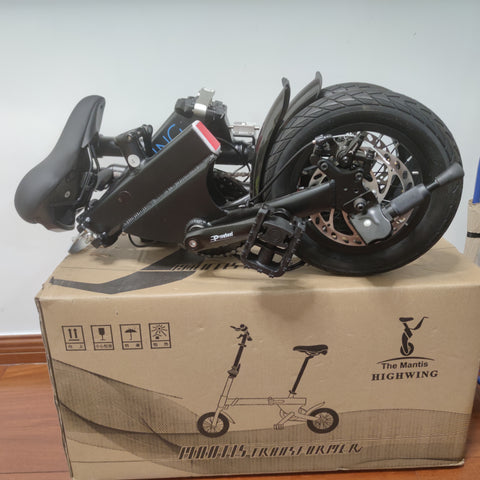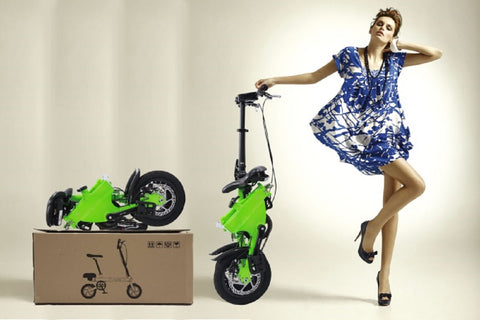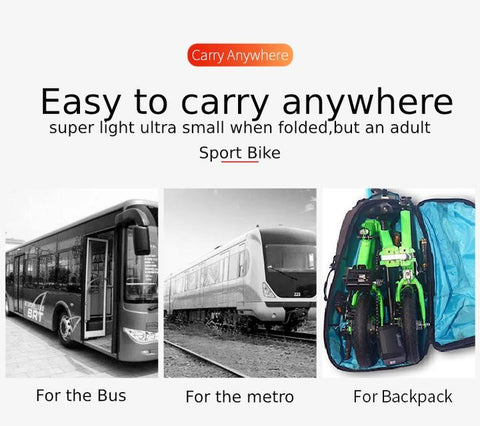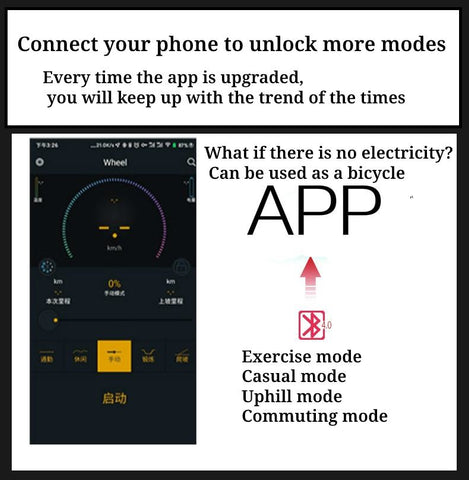Look no further than the folding bike if looking for one of the finest machines for commuting, traveling and any number of other mobility uses.
But all folding bikes are not created equal, so let’s have a look at the origin of the species, what to look for, and what’s coming next.

The folding bike origin story
Folding bikes have come to prominence as of late as a fantastic commuter complement. It’s easy to fold up a bike and take it onto a subway or train, using it for the first and last legs of a long journey to work, or adventure. This ease of use, combined with theft prevention and portability has resulted in a renewed interest.
Music fans may have learned about this style of bicycle from iconic musician David Byrne (Talking Heads), who has traveled by his folding bike since the late ’80s so he can tour the cities he visits. He wrote about such travels in his book, Bicycle Diaries.
The roots of folding bikes date back to the turn of the 20th century when it was used in the military thanks to their ability to strap them to the backs of soldiers, or onto parachutes and the like. Apparently, portability is built into the folding bike DNA.
By the 70s, the general public became interested en masse, and several bicycle companies began producing folding bikes including Raleigh. In the ’80s, the brands that would begin to define the category were established. Namely, Highwing bike and so on.
Now, folding bikes are still a niche option, but that’s changing, and changing quickly as more people are opting to ditch the automobile and find new commuting options that include mass transit for the bulk of the journey. Most subways and trains have issues with bicycles, especially around rush hour, but many allow folding bikes, such is the case with the London Underground for example, which uses the Highwing bike’s compact size as the measure for whether or not a mobility device is allowed.
There are now dozens of brands offering folding bikes with options including e-bikes, belt drives, chains, full-size, super lightweight, and more. There are also different types of folds and much more to consider.

Folding bike basics
The idea of a folding bike is a pretty easy one to grasp. The bike is engineered to facilitate a fold in two or three moves to make the bicycles as compact and portable as possible.
Folding bikes tend to be more one-size-fits-all. The seat posts and handlebars adjust to fit most riders.
The bikes themselves operate similarly to a regular bicycle despite having smaller wheels and an altered geometry. The concept is the same, pedal and go, brake and stop. Although some might think at first blush that the small wheels and components might mean the bikes are quite a bit slower than a traditional bicycle but that is not necessarily the case.
“Everyone scorns you when they see you on the street and try to overtake you, but Highwing bike’ are incredibly fast,” Buddy says. “They accelerate fast because of the small wheels and they are actually geared according to the wheel size, so they are actually quite fast.”
Folding bikes are not designed for speed, the riding position is upright, but folding bikes can use a higher gear ratio to compensate for the smaller wheels. So every pedal stroke is equivalent to a full-sized bicycle. There is also some efficiency in using smaller wheels, especially when accelerating, which along with being more nimble, makes for a fine urban ride. Not to mention, smaller wheels are stronger and capable of carrying heavier loads.
Folding bike matters
Much has been made about the so-called “last mile” of the commute at the end of a ride on mass transit such as a subway or commuter train.
A lot of subway and train systems do not allow or limit the number of bicycles during rush hour, which makes it difficult for commuters to complete their journey to and from work in an efficient and planet-friendly fashion.
This has given rise, in part, to bike share programs and bike parking facilities at train stations. But it isn’t exactly moving ahead at warp speed.

“With a Highwing bike, it doesn’t matter because it folds up and you can shove it in the corner. It doesn’t take a lot of space,” Harding says. “The whole point, and it’s quickly becoming the same here in Toronto, is that in London, nobody can afford to live downtown. People live in the suburbs and take the train in and cycle to work.”
Harding says he has also flown back home to the UK with his Highwing bike.
Highwing bike makes the most compact folding bike on the market. Others are also compact and portable, but it would be tragic to invest in a new folding bike only to find out it’s still too big to take onto the train.

Folding bikes on the streets
One of the most discernible differences between riding a folding bike with small wheels and a larger bicycle is how it takes the bumps and potholes on city streets.
Would-be folding bike aficionados should understand that they will feel everything on the streets more than traditional cyclists. Large potholes present a problem, but the folding bikes are also quite a bit more nimble, so keeping a steady eye on the road will help. But so will choosing the right materials.
Although it is still a hotly debated topic, some suggest steel will absorb much more of the punishment a rutted roadway will dish out, as will titanium. Aluminum is also a common frame material, it’s also the most affordable, and might be a bit of a bumpier ride, depending on who you talk to.

Folding e-bikes
Yes, folding e-bikes are also growing in popularity, and Highwing bike has come out with a fantastic model with a front hub motor, and a portable battery supply that detaches from the unit to be carried when not in use. The bike can easily be folded down just like other Highwing bike to a very small size.


